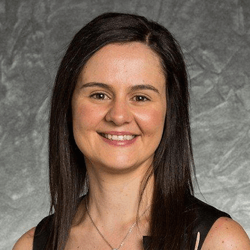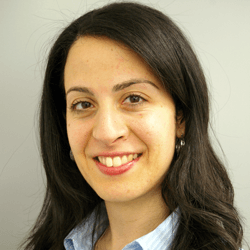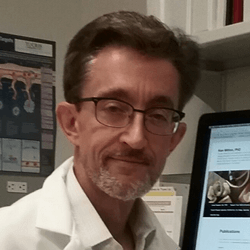Five members in five minutes
Boost your research with social media advice from ARVO members
 |
Laura Downie, BOptom, PhD, FAAO “Social media has emerged as a valuable tool for researchers to disseminate their research, build their collaborative networks and demonstrate research impact beyond the academic sphere. In my experience, Twitter has been an effective means for showcasing recent publications from my laboratory, in order to communicate research findings to patients, as well as to other researchers. The effective use of hashtag, to increase the likelihood of posts being featured in searches, has expanded the reach of our work — including to international audiences. This international engagement has served as a basis for several new research collaborations. Social media can thus be a useful platform for sharing academic content and increasing its visibility to a global audience.” |
 |
Leslie Hyman, PhD, FARVO “The widespread use of social media offers new opportunities to enhance clinical, epidemiologic and population-based research. To date, the most effective use of social media in my research has been with platforms such as Facebook to promote participant recruitment with relevant target audiences, maintain study participant contact and trace participants who have been lost to follow-up about projects. It has also been helpful to communicate general study messages, but not patient specific information. The full potential of data acquired through social media will be realized once challenges such as sampling biasesand patient confidentiality are better understood and addressed.” |
 |
Maria Markoulli, PhD, MOptom Lecturer School of Optometry and Vision Science, University of New South Wales @MMarkoulli “I have found Twitter to be an efficient and effective platform, not only for the promotion of my research, but for keeping up with recent advances and for joining an online academic community. Twitter has a 140-character limit, forcing users to be succinct. This means that key messages can be conveyed swiftly to many people. Various strategies can be employed to spread your message further than just to those that follow you. For example, “tagging” key organizations to images in your message can result in them retweeting to their wider audience. Using hashtags for keywords can also gain traction.” |
 |
Kenneth P. Mitton, PhD, FARVO “Social media provides me and my unit, the Eye Research Institute (ERI) – Oakland University, with two important things: awareness and communication. Awareness about our work here in the community and around the globe, but also for own students who participate in my National Eye Institute and foundation-funded research. I manage Twitter for myself and the ERI, my own website in WordPress and my blog The Science Rant. I made a March for Science App in Google Play to support the recent science march. This helps me connect to the community outside the gates of my university.” |
 |
Juliet A. Moncaster, PhD “I have been using social media for a couple of years — mainly Facebook, LinkedIn and Twitter. These can be great tools for outreach that go beyond just the scientific community. Twitter is a good source of information and connections. You can use it to see what others like @ARVOinfo or @NatEyeInstitute are tweeting about. You can share information by tweeting a comment or posting a link to your latest publication. I use Tweetdeck to help organize the Twitter feeds I follow. In my role as chair of ARVO’s Advocacy and Outreach Committee, I have found the latest on science policy through Twitter by following government agencies and science policy organizations and have been able to spread the word by forwarding the tweet/info on. In times like these when it is so critical to advocate for our research and the need for funding, social media can be a great tool.” CJ |
